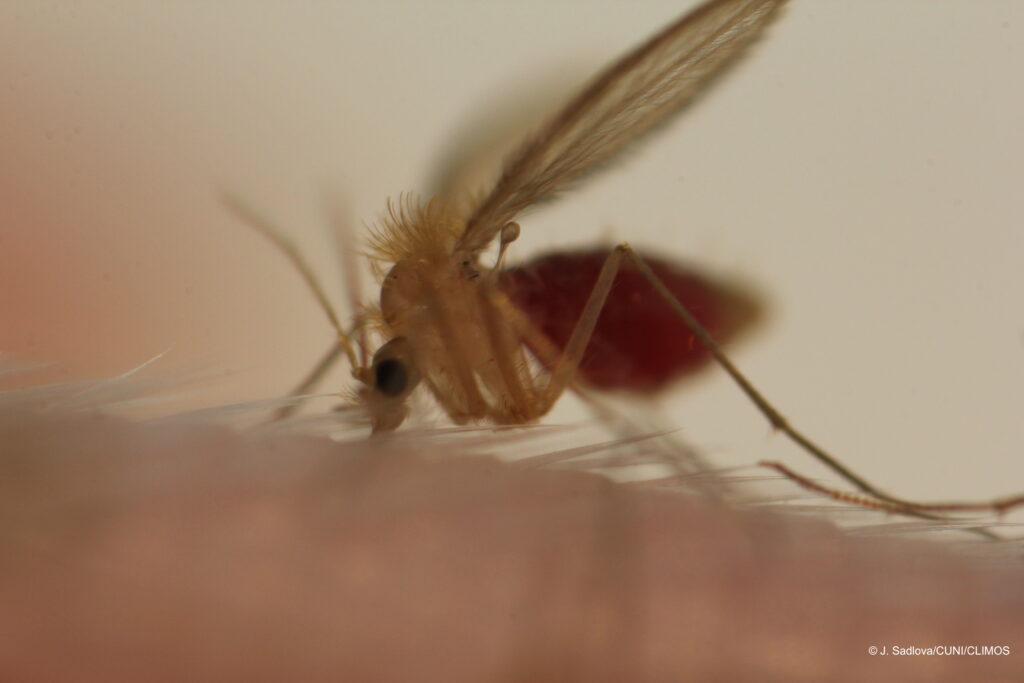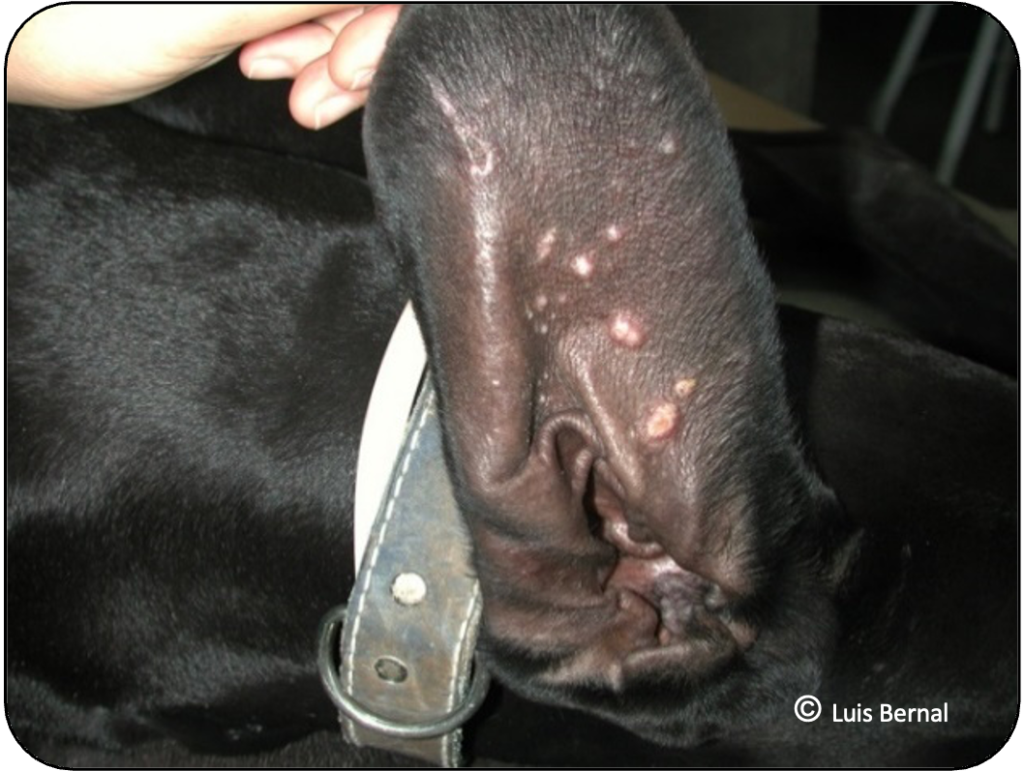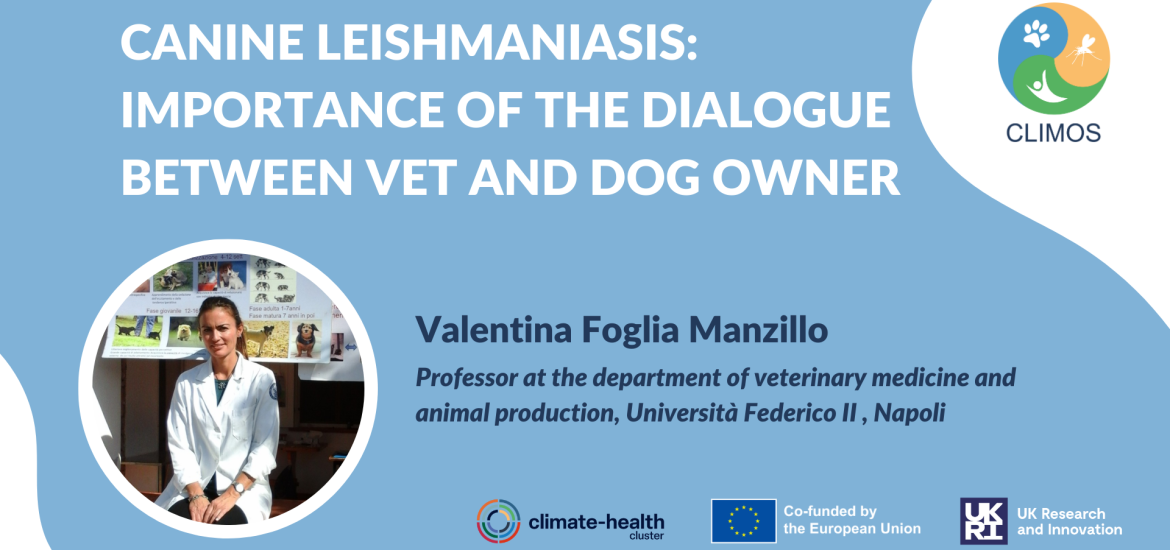Zoonotic visceral leishmaniasis is a sand fly-borne disease caused by the protozoan parasite Leishmania infantum and is widely distributed in temperate and subtropical countries of both the Old and New Worlds. Domestic dogs are the main reservoir host for human disease. Dogs may suffer from severe diseases (canine leishmaniasis, CanL). In endemic settings, a susceptible fraction of infected dogs tends to progress towards clinical disease, whereas a resistant fraction does not. However, both seropositive asymptomatic dogs and dogs exhibiting clinical signs can be infectious to phlebotomine vectors and contribute to a different extent to parasite transmission.
Therefore, Vets have a central role for a good communication with the dog’s owners to inform on the main points that allow to:
- Know how the infection is transmitted
- Get an early diagnosis
- Choose the treatment
- Know the preventive and prophylactic measures
- Inform about the potential risk for humans
With the aim of reducing the risk of contracting the disease and, consequently, reducing the reservoir of infection represented by the infected/sick dog.
● How is the infection transmitted?

To complete its biological cycle, Leishmania requires an intermediate host, consisting of a blood-feeding vector (phlebotomine sand fly) and a definitive vector, the vertebrate host. When an uninfected sand fly takes a blood meal on an infected host, it ingests the amastigotes (non-infective forms).
Inside the vector, the amastigotes undergo a series of morphological changes until they are transformed into the flagellate promastigote form. The female of the phlebotomine sand fly houses the promastigotes in its own digestive apparatus and transmits the parasite during its next blood meal to domestic and wild animals and to man. Other routes of transmission could be blood transfusion, coital and uterine.
● How to obtain a correct diagnosis?
An early diagnosis is based on a complete and correct medical history and on the evaluation of clinical signs. The owner, therefore, must be aware of the symptoms of canine leishmaniasis to be alert and take the dog to the vet. The most frequent clinical signs are: weight loss, muscular atrophy, lethargy and pale mucous membrane, enlargement, Cutaneous signs, including nodules/ulcers, onychogryphosis, dry exfoliative dermatitis and alopecia; Ocular signs, including blepharitis, keratoconjunctivitis and uveitis; It is also important to carry out routine laboratory tests which may reveal suggestive alterations such as: anaemia, thrombocytopenia, increase of total proteins, hyperglobulinemia, increase of urea and creatinine, proteinuria.

Credits: Carla Maia

Credits: Luis Bernal
Another fundamental step to explain to the owner is the achievement of the etiological diagnosis that is possible by highlighting the protozoan or the antibodies directed against it. The diagnostic methods that can be used are:
- direct observation under the microscope of a cytological preparation obtained from lymph node, bone marrow, splenic needle aspiration or from cytological samples obtained from lesions that can be sampled (e.g. nodular lesions, scarifications of ulcerated skin lesions, etc.) which allows the identification of Leishmania infantum amastigotes;
- serological tests (rapid immunochromatographic tests, ELISA, immunofluorescence) performed on blood serum to highlight anti-Leishmania infantum antibodies;
- PCR test (qualitative or quantitative) performed on bone marrow blood, lymph node material, splenic material, material obtained from skin lesions attributable to the parasite or peripheral blood, for the amplification of the protozoan DNA;
- culture test (easily obtainable from lymph node material) which allows the multiplication of the parasite and the evaluation of its presence in the form of promastigote. This technique requires long waiting times, about 4 weeks, and for this reason it cannot be used for outpatient diagnostic purposes.
● Can canine leishmaniasis be cured?
Good communication with the owner is important to explain that the treatment will not allow the definitive elimination of the parasite but will help the dog to improve the symptoms, prevent the disease from progressing and ensure a better quality of life. The therapeutic protocols most frequently used are N-methylglucamine antimoniate (50 mg/kg b.i.d. s.c. for about four to six weeks), usually in combination with allopurinol (10 mg/kg b.i.d. for long periods). Miltefosine (2 mg/kg once a day, with food for 28 days), in combination with allopurinol. In dogs which have several relapses, it is important to use protocols which are different from those used previously to avoid drug resistance developing.
● Can Canine Leishmaniasis be prevented?
Since no formulation can guarantee complete protection, it is advisable to adopt further precautions: treat the dog regularly with a product which has repellent activity against phlebotomine sand flies; reduce the dog’s exposure to sand flies at night by avoiding long walks at night and ensuring that he is locked up under cover during the night; treat the environment, using environmental insecticides for domestic use. Furthermore, there are anti-leishmania vaccines which, although do not guarantee a total protection from the infection, manage to reduce the severity or the symptoms and the progression of the disease.
● What is the risk for humans?
The transmission of the infection from animal to man occurs through bites by infected sand flies. The vector has a single blood meal at night, and so having a dog infected with Leishmania in the home is not a real risk for the owner. In fact, if sand fly bites a dog with leishmaniosis in the house, it cannot transmit the parasite to man since the insect will have its next blood meal about two weeks later. During this period usually the sand fly tends to keep away from domestic environments. Predisposing factors are childhood, malnutrition, HIV and other severe reductions of immunocompetence. However Clinical and parasitological healing is usually obtained.
Download the full article in this link
